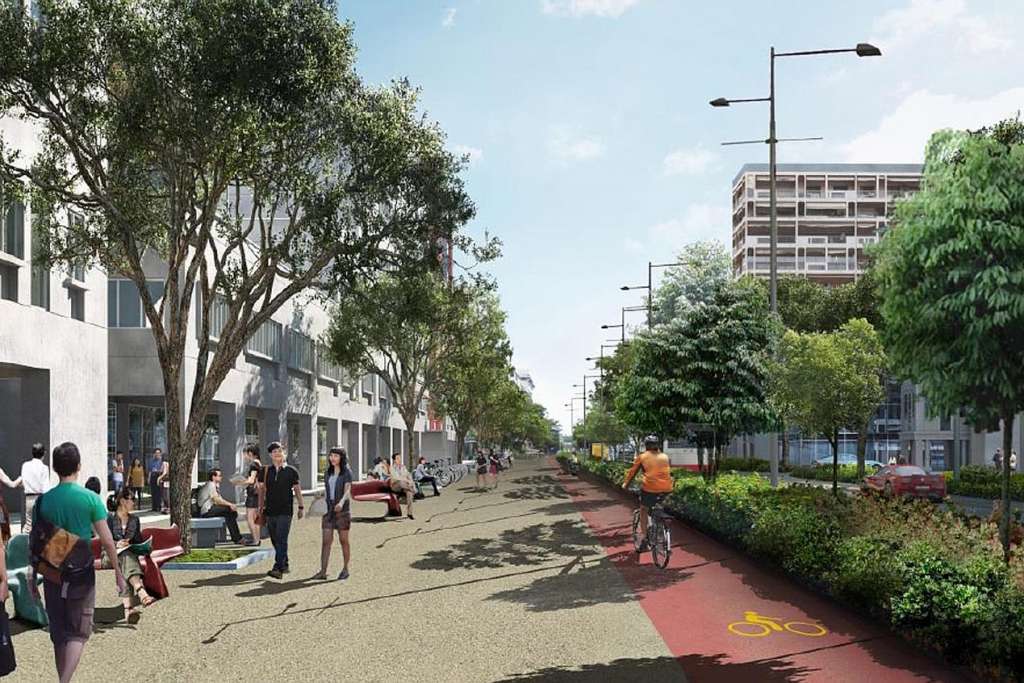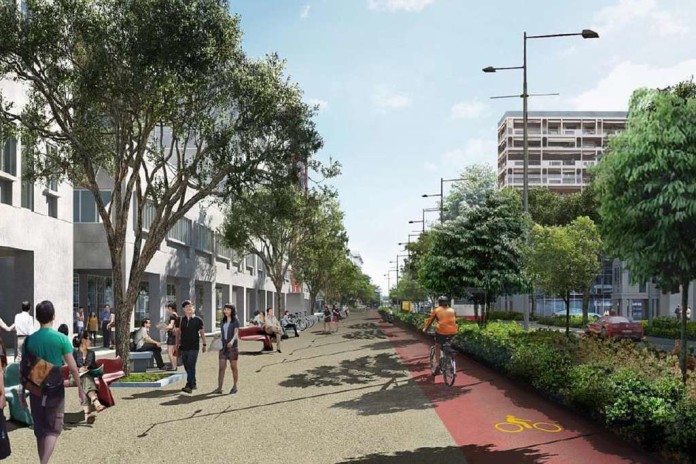Green will be the colour for 2017 in the land transport sector.
Several changes and developments will pave the way for a more environmentally sustainable way of travel, starting with the opening of Downtown Line 3.
When this 21km MRT line stretching from River Valley to Expo opens by the second half of the year, it will encourage more people to leave their cars at home and take the train.
It will complete a 42km line that links the east of the island to the city centre and the north-west.
Hence, its full potential as a pan-island transit project will be realised.
Trains will not only reach new catchment areas, such as Jalan Besar, Kaki Bukit and Upper Changi, but also provide more convenient options to commuters who may not have to make transfers to complete a journey.
And if a breakdown occurs, say, on the East-West Line, commuters do not have to go far to get onto another line.
Meanwhile, people working in Tuas will get to ride a new line earlier.
The Tuas West Extension – a 7.5km line that goes west from Joo Koon station on the East-West Line – will open in the second quarter.
The extension, which was originally slated to open by the end of this year, will be a boon to those who work or have business operations in the Tuas district.
Despite its vastness, the area is not well served by public transport.
Those who have no choice but to drive today will have an alternative when the line opens.
The two new MRT lines will help boost daily rail ridership towards the 3.5 million mark, up from just more than three million today.
This, in turn, will potentially reduce car usage. The annual mileage clocked on average here has already dropped to 17,500km – down from 21,075km in 2006.
National University of Singapore transport researcher Lee Der Horng said: “In recent years, the bus contracting model, bus enhancement programme, bus service reliability framework, new rail financing framework, upgrade and renewal of train systems, all have contributed to make Singapore’s public transport system the preferred mode of travel.”
Elsewhere, a review of the annual growth rate cap on the vehicle population is on the cards next year .
Currently at 0.25 per cent, it could be cut to zero when the new certificate of entitlement quota starts in February 2018.
In line with its aim to make Singapore “car-lite”, the Government has already hinted strongly at a zero growth rate.
Prof Lee said this might prove to be “a culture shock” to people “who have long recognised driving as the most convenient mode of travel”.
“To a large extent, the city was designed to serve motorised vehicles,” he added.
For a successful shift from private to public transport, Prof Lee said a fine balance between “push and pull measures” must be in place.
In this vein, a national electric vehicle sharing scheme slated to be plugged in – possibly by the third quarter – might come in handy.
Of course, questions remain – such as how economically viable the scheme is without subsidies, and how practical it is for families to squeeze into the small bubble-shaped hatchbacks to be used.
But if the scheme takes off, it will contribute in a small way to cleaner air in the city.
So will two other changes slated for 2017 – implementation of Euro 6 emission standards for petrol vehicles in September, and a review of the current Carbon Emissions- based Vehicle Scheme (CEVS) by June.
Euro 6 is the strictest emission standard in Europe today. It stipulates a significant reduction in noxious tailpipe emissions, in particular nitrogen oxides and fine particulate matter.
Singapore currently enforces the Euro 4 standard for petrol vehicles and Euro 5 for diesel models.
By 2018, diesel vehicles here will have to conform to Euro 6 too.
Just as significant will be a revision to CEVS.
The current scheme, slated to run out by the end of June next year, dishes out tax rebates and surcharges according to how much carbon dioxide a car produces.
The revision is likely to also take into account other pollutants and, as a result, possibly be kinder to electric vehicles.
“We are heading in the right direction,” Prof Lee noted.
christan@sph.com.sg

This article was first published on Dec 29, 2016.
Get a copy of The Straits Times or go to straitstimes.com for more stories.







